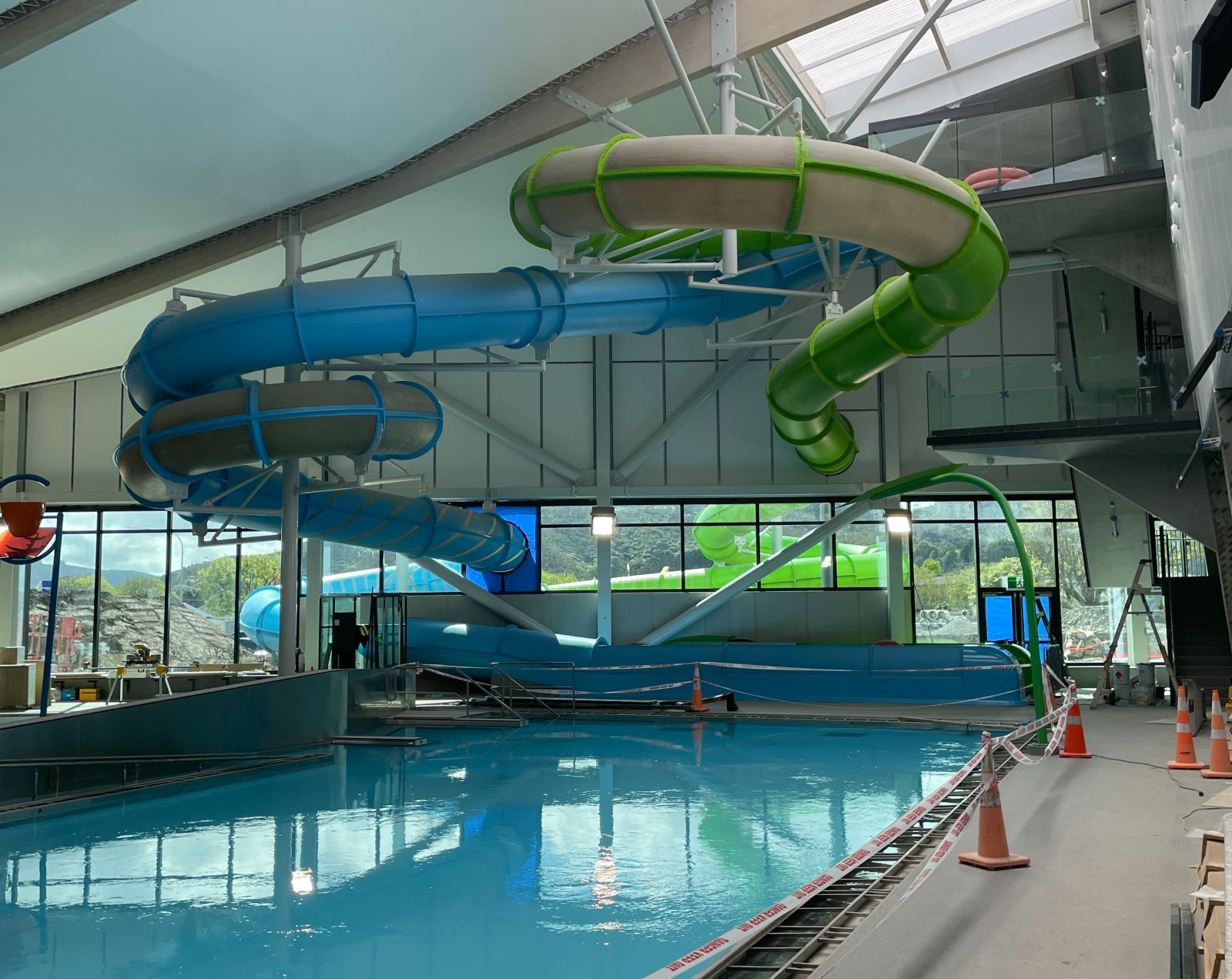Published: 15 October 2024
Te Ngaengae Pool and Fitness aims to be New Zealand’s most sustainable pool when it opens in early December, through massively reduced carbon emissions and lower energy use.
It will also be resilient to the impacts of climate change and natural disasters through the design features and the enhanced seismic strength of the new build.
The old Naenae Pool, which closed in 2019, produced 546 tonnes of carbon emissions each year from its electricity and gas-powered pool heating and ventilation systems - the equivalent emissions of driving 3.28 million kilometres in a diesel car.
Emissions from energy usage at the new pool will be slashed by 56%, and energy use intensity will reduce by 53%.
The innovative design and efficiency measures include heat pumps for heating water, LED lighting, insulation, and ways to manage temperature and humidity. This will see the total energy usage reduce by 22% when compared to the old complex, despite the building’s footprint being more than 60% larger.
The range of sustainability features will be included in an application for a Green Star 5 sustainability rating, Australasia’s largest voluntary rating system for non-residential buildings, fit outs and communities.
Mayor Campbell Barry said he is proud of the reductions in energy use and carbon emissions.
“We are following through on our commitment to being carbon zero by 2050 with an aquatic facility which leads the way in New Zealand when it comes to sustainability."
Council agreed in 2021 to phase out the use of fossil gas and has since swapped the gas heating plant at Eastbourne Pool and McKenzie Baths with heat pumps. Huia will be upgraded over the next few months, with gas boilers swapped with heat pumps and Stokes Valley and Wainuiomata pools are scheduled for decarbonisation later this decade.
Te Ngaengae pool water will be conditioned through a filtration system using sand to trap particles, debris and other contaminants. It replaces a system called Diatomaceous Earth (DE), made from fossilised remains of tiny, aquatic organisms.
Head of Aquatics Iain Brown says sand filters achieve high water quality and are the way of the future.
“Over the coming years we’re replacing DE systems with new sand filters at all Hutt City Council-operated pools, including those yet to be converted at Huia and the Stokes Valley pools.
“Once we transition all pools to sand filtration, it will stop the use of nearly 3000kg of DE a year.”
Other design features of the Te Ngaengae complex include:
- EV parks with charging points and secure bike stands
- Using glued laminated timber from a sustainable source for the main pool hall structures
- Reduced heat gain by using sun-shading, smaller windows and high efficiency glazing
- Stainless steel pool tanks, involving less embodied carbon than concrete base/walls
- Timber framing and lightweight fabric ceilings.
Sustainability measures were in place from the beginning of the project which saw about 80% of all demolition material from the old pool recycled or reused, saving more than 13,000 tonnes of scrap metal and concrete from going to landfill.
Concrete from the old pool tank was crushed and re-used on-site, salvaged timber and other items were donated to residents, and the timber from the old hall was reused.
About Te Ngaengae Pool and Fitness Centre
- Te Ngaengae Pool and Fitness Centre will open on 4 December with a community celebration on 7 December.
- The new complex has a 50-metre pool, moveable pool depths to accommodate different activities at the same time, two zoom tubes, a family-friendly leisure pool, gymnasium and poolside party room.
- Cost of the project is $68 million, with $27 million coming from central government through the Infrastructure Reference Group Fund in partnership with Crown Infrastructure Partners.
- Council has worked with Callaghan Innovation to support Te Ngaengae to target a Green Star 5-star sustainability rating. This work is underway following the Green Star Design and As Built v1.0. framework.
